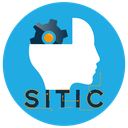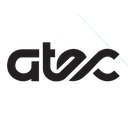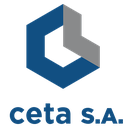Executive Secretary

III International Symposium on “Generation and Transfer of Knowledge for Digital Transformation
SITIC 2025
Abstract
Introduction
Intelligent agents are autonomous systems that interact with an environment through perception, processing, and action, with the goal of accomplishing specific tasks. On the other hand, Large Language Models (LLMs), such as DeepSeek V3, are deep learning models trained on vast textual corpora, capable of generating and understanding natural language with a high level of coherence.
Development of Intelligent Agents
An intelligent agent is defined by:
Architecture:
Sensors (data input).
Processing (logic, machine learning/reinforcement).
Actuators (output/action).
Typologies:
Reactive: Responses based on predefined rules.
Goal-based: Planning to achieve goals.
Learning: Continuous improvement through ML/RL.
Integration of LLMs into Agents
LLMs act as natural language processing (NLP) modules within agents, enabling:
Contextual understanding of complex inputs.
Generation of fluent and adaptive responses.
Surface reasoning (e.g., simple problem solving).
However, they have limitations:
Lack of grounding: They have no inherent connection to the real world.
Hallucinations: They generate misinformation if training data is insufficient.
Lack of online learning: They require fine-tuning to update knowledge.
Recent Advances
Hybrid architectures are being explored where:
LLMs are combined with structured knowledge bases (e.g., graphs).
Planning modules are incorporated (e.g., decision trees or Monte Carlo).
Long-term memory is enabled (e.g., embedding vectors or databases).
Conclusion
The synergy between intelligent agents and LLMs enables more versatile systems, but challenges remain in consistency, security, and real autonomy. Future research should address the integration of multimodality (voice, image) and external verification mechanisms.
Resumen
Introducción
Los agentes inteligentes son sistemas autónomos que interactúan con un entorno mediante percepción, procesamiento y acción, con el objetivo de cumplir tareas específicas. Por otro lado, los Large Language Models (LLMs), como DeepSeek V3, son modelos de aprendizaje profundo entrenados en vastos corpus textuales, capaces de generar y comprender lenguaje natural con alto nivel de coherencia.
Desarrollo de Agentes Inteligentes
Un agente inteligente se define por:
Arquitectura:
Sensores (entrada de datos).
Procesamiento (lógica, aprendizaje automático/refuerzo).
Actuadores (salida/acción).
Tipologías:
Reactivos: Respuestas basadas en reglas predefinidas.
Basados en objetivos: Planificación para alcanzar metas.
Aprendizaje: Mejora continua mediante ML/RL.
Integración de LLMs en Agentes
Los LLMs actúan como módulos de procesamiento de lenguaje natural (NLP) dentro de agentes, permitiendo:
Comprensión contextual de entradas complejas.
Generación de respuestas fluidas y adaptativas.
Razonamiento superficial (ej.: resolución de problemas simples).
Sin embargo, presentan limitaciones:
Falta de grounding: No tienen conexión inherente con el mundo real.
Alucinaciones: Generan información errónea si los datos de entrenamiento son insuficientes.
Ausencia de aprendizaje en línea: Requieren fine-tuning para actualizar conocimiento.
Avances Recientes
Se exploran arquitecturas híbridas donde:
Los LLMs se combinan con bases de conocimiento estructuradas (ej.: grafos).
Se incorporan módulos de planificación (ej.: árboles de decisión o Monte Carlo).
Se habilita memoria a largo plazo (ej.: vectores de embeddings o bases de datos).
Conclusión
La sinergia entre agentes inteligentes y LLMs potencia sistemas más versátiles, pero persisten desafíos en consistencia, seguridad y autonomía real. Futuras investigaciones deberán abordar la integración de multimodalidad (voz, imagen) y mecanismos de verificación externa
About The Speaker

Dr. Amed Abel Leiva Mederos

Profesor del departamento de CI
Discussion

 Gold
Gold
 Gold
Gold
 Gold
Gold
 Gold
Gold
 Silver
Silver